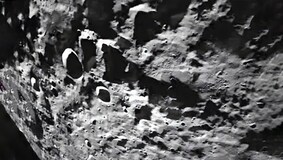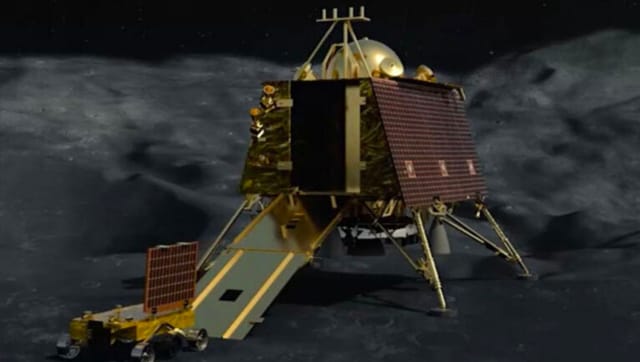The Vikram Lander’s successful touchdown on the moon has made India the only country to successfully land on the south pole of the Moon. The success of the Chandrayaan 3 mission also means that ISRO is now in a league of its own.
India has created history. India has done what none ever could. India has achieved what happens once in a blue moon. India has landed on the ‘hellish’ South Pole of the Moon Wednesday, August 23, at 6:04 PM.
The unison of 1.4 billion prayers was answered as ISRO’s Chandrayaan 3 mission to the moon successfully made a soft landing at its predesignated landing spot.
The entire landing sequence worked like a well-oiled machine. As stated by ISRO, the Vikram Lander module, started its separation from the Propulsion Module at 5:44 PM and made its way down to the lunar surface, finally touching down on the lunar surface.
Related Articles

WATCH: Chandrayaan-3 shares close-up video of Moon captured by Vikram lander module

Vehicle of Wisdom: Pragyan rover in Chandrayaan-3’s Vikram lander is an engineering marvel
With this, India becomes the first country to successfully land on the south pole of the Moon.
The landing of the Chandrayaan 3 mission was designed to be similar to that of the Chandrayaan 2, said ISRO in a statement. The only difference is that the lander module was built in an error-proof manner, ready to deal with a variety of situations, should things have taken a wrong turn.
The rough braking phase went just as planned. The Lander Module’s speed was brought down from over 6000 km/h to about 1000 km/h. During this phase the altitude of the Lander Module, went from over 30 km, to just under 8 km.
The Lander Module just breezed through the attitude-holding phase.
The Fine Braking phase took place over 3 minutes, during which the altitude was reduced to 800 metres above the lunar surface.
The Vertical Descent phase or the local navigation phase also went smoothly, at the end of which, India made history.
Meticulously Planned
The landing was planned meticulously by the engineers and scientists by ISRO. After the fateful attempt of Chandrayaan-2, ISRO had learnt its lesson. As a result, it did not take any chances with the landing of the Vikram Lander this time around and had prepared several contingencies.
For example, ISRO had made the Vikram Lander for the Chandrayaan 3 slightly different from the previous ones. S Somanath, the Chairman of ISRO had told reporters that it was developed in such a way that even if all the sensors required for landing went kaput for some reason, the lander would still make a soft landing.
For days, ISRO was looking for a suitable landing spot on the lunar south pole, given the challenging conditions of the Moon’s south pole. A few hours before the mission today, ISRO did its last checks and decided to go ahead with the landing today itself, instead of August 27.
Powered By AI
Once the Vikram Lander Module, reached its designated spot around its final orbit around the Moon, ISRO initiated the ALS or Automatic Landing System. Following this, the Lander separated from the propulsion module and made its way down to the Moon in 4 stages.
During these stages, the propulsion of the Lander Module, and the throttleable engines helped the module turn vertically and kept it perpendicularly aligned to the lunar surface. The engines also acted as active brakes slowing down the descent of the Lander, ensuring it did not slam onto the surface.
All of this was controlled not by the scientists at ISRO, but by AI and ML algorithms designed by ISRO engineers. Once they had activated the ALS, the team at ISRO had no way of controlling the Vikram Lander – everything was managed by the Lander Module’s sensors, camera arrays, and AI algorithms
Just getting started
Now that the most crucial aspect of the Chandrayaan 3 mission has been dealt with, the main mission of Pragyan, India’s Lunar Rover is getting started.
Over the next 14 days, the Pragyan Rover will analyse the soil, topography and atmosphere of the moon, looking for some vital minerals. Most importantly though, it will be looking for Helium-3, a virtually limitless clean energy source that will be key in our clean energy programmes. During its expedition across the lunar south pole, Pragyan will also look for water ice, which will be key for future expeditions, especially interplanetary missions.
Next up, the Sun
Following the successful landing of the Vikram Lander of the Chandrayaan 3 mission, ISRO now has its eyes set on the Sun. ISRO is now preparing to launch India’s first space-based Sun observatory, the Aditya-L1. The satellite has been sent to ISRO’s space launch pad at Sriharikota, from where it will be launched by the end of August or early September
Denial of responsibility! My Droll is an automatic aggregator of Global media. In each content, the hyperlink to the primary source is specified. All trademarks belong to their rightful owners, and all materials to their authors. For any complaint, please reach us at – [email protected]. We will take necessary action within 24 hours.


